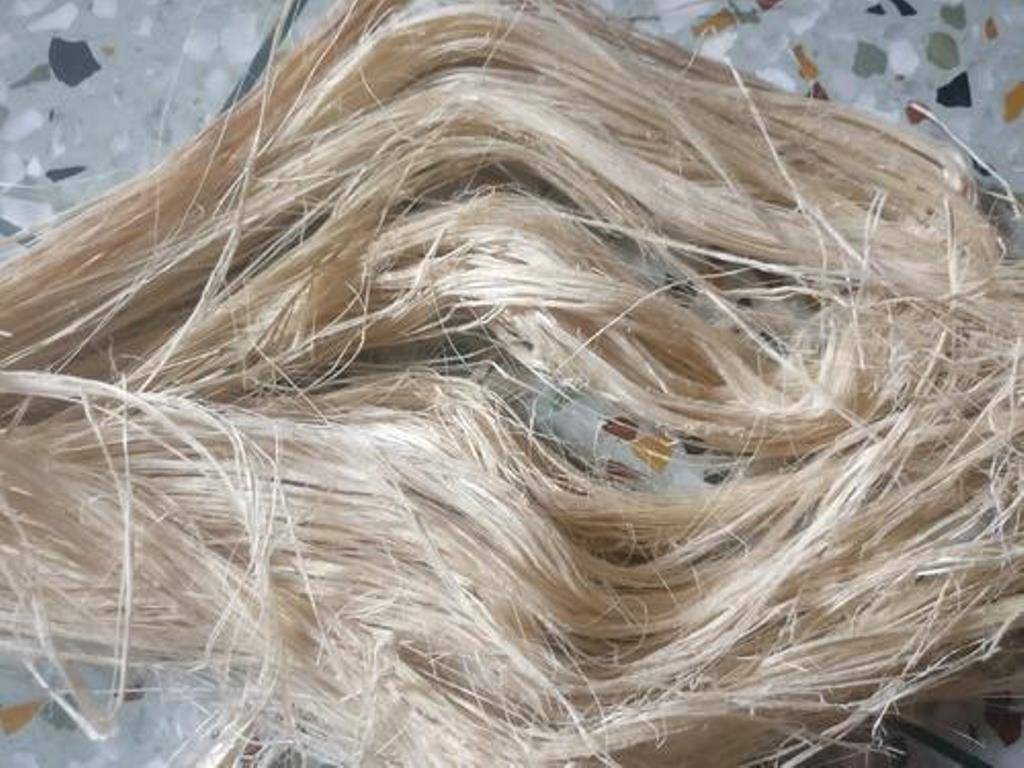
Banana Fibre also is known as Musa fibre, the agricultural waste and a nuisance for farmers is now a raw material for good quality silk grade fibre yarn. The use of banana stems as a source of fibre declined after other convenient fibres such as cotton and silk became popular. But in recent years the commercial value of banana fibre has increased and it is used all over the world for multiple purposes from making tea bags and sanitary napkins.
How fruit fibres can be useful in unexpected ways, in Africa, the Banana pads for girls are attracting the women community world over.
In the Eastern Ngoma district in Rwanda in the capital city, Kigali school girls can now buy locally produced cheaper sanitary towels. The fluff is processed from banana fibres, a waste product from the thousands upon thousands of banana plants. In this rural workshop, it is spun into a product that, according to America, is worth its weight in gold: the core of eco-friendly, cheap sanitary pads that rival imported products with big brand names.
Marie-Louise Umurisa leads guests into a workshop where a dozen or so women in safety goggles and overalls are working at stainless steel benches. She picks up a handful of fluff. It's pale brownish grey, odorless and rather nondescript. With the help of experts, Elisabeth Scharpf developed and patented the process to transform banana fibres into an absorbent material in the US. She also worked with professionals to build a production site in Eastern Rwanda.
She started lobbying the Rwandan Government to drop tax on sanitary pads and a campaign called "Break the Silence" spurred the authorities to distribute pads to in-need schools. The organization also worked to dispel myths and taboos about menstruation through health and hygiene education in schools. Her customers include teenage girls and casual labourers. "Young girls are now more comfortable to ask for sanitary pads. I think they now understand it is okay to buy pads."
Banana stems had been used as a source of fibre with the earliest evidence dating to the 13th century. But its popularity faded after other convenient fibres such as cotton and silk were made popular. For centuries, banana fibre textiles were made in Japan and Nepal.
In Japan, banana fibres were a prized substitute for silk and were traditionally woven into ceremonial garments for the wealthy. In both Nepal and Japan, the outermost sheaths of the banana plant were used for making cloth that was not intended for articles of clothing. The coarser banana cloth was used for placemats, floor mats and sunshades.
Initially, people in Japan and Nepal realized that except for the fruit, the complete banana tree is cut and thrown as waste. After exploring the tree, they figured out that the stalk can be used to make strong ropes. Eventually, they discovered other uses of banana fibre.
Banana fibre is used all over the world for multiple purposes. The commercial value of the fibre has increased over the years. Transforming the waste into a usable fabric and other products is a great achievement.
In 2015, the research in India to find an alternative to conventional pads was started by the founders. By the end of the year, the founders were ready with the prototype of the product and that was a 100 per cent biodegradable sanitary napkin which was made using locally sourced banana fibre.
Commercial pads contain toxic chemicals which are released into the environment when disposed of and collect in landfills without breaking down. With only 16% of Indian women using sanitary pads (the rest use old rags, mud and bark), a staggering 108,000 tons of pad waste is created annually– enough to cover a landfill of 24 hectares. The Indian Government plans to increase sanitary pad usage since a lack of access to affordable pads is the leading reason for higher dropout rates of school-aged girls.
India’s first compostable pad made from banana fibres and absolutely zero chemicals. Saathi does all local sourcing/manufacturing and is the only sanitary pad company to consider the entire product lifecycle. The only other eco-friendly pad manufacturer is Aakar Innovations which has small-scale manufacturing units run by groups of rural women.
Nurture is a leading eco-friendly brand but they are imported and made with cotton, which uses six times the amount of water and ten times the amount of fertilizer as bananas. Saathi's compostable product will be accessible to women across income levels and benefit the local economy.
Pads in urban India are currently sold on our website and will be sold via other eCommerce and retail options in the future. The scale-up plan will reduce raw material and manufacturing cost which will make the pads more affordable. We locally source banana fibre and other biodegradable materials to create pads that degrade within 6 months of disposal- 1200x faster than plastic pads. Each woman purchasing Saathi pads saves 60 kg of pad waste over her lifetime and subsidizes pads for low-income women.
In 2015, Amrita, Kristin, Grace, the graduates from Massachusetts Institute of Technology got together and started the journey to find solutions to India’s growing menstrual waste woes. They met fellow co-founder Tarun Bothra who is an engineer by profession; together they conceived the idea and started working on the solutions.
Shri Tarun Bothra, further added that We knew we will have to make an environmentally friendly sanitary pad using natural fibres since India is the second-largest producer of bananas, we thought why don’t we use this as our by-product. We experimented the product and it came out to be a success.
Since Saathi pads are made out of waste banana fibres, the need for this waste is there in the market. Saathi buys the waste from farmers and helps them earn more.
















